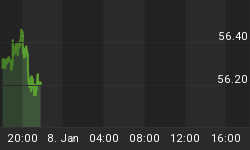For the first time ever, scientists from Los Alamos National Laboratory had a peek inside the structure of the Ram's Horn, a 263 gram, 12-centimeter tall wire gold specimen considered one of the few of its kind.
Using neutron characterization techniques, the researchers were able to take a look to try to better understand how the shiny object was formed.
"Almost nothing other than the existence of the specimen is known about wire gold," said Sven Vogel, a physicist at Los Alamos National Laboratory's neutron science center.
According to Vogel, wire silver is more common in nature but its yellow counterpart is so rare that this particular specimen is almost invaluable.
"Wire silver is a mosaic-like polycrystalline aggregate with many hundreds to thousands of crystals in a single wire," explained John Rakovan, Professor of Mineralogy at Miami University and one of the researchers involved in the experiment. "The gold appears to be composed of only a few single crystals. Furthermore, we discovered that these samples are not pure gold, but rather gold-silver alloys with as much as 30 percent silver substituting for gold in the atomic structure."
The sample will be the centerpiece of a new exhibit at the Harvard Museum of Natural History in the spring of 2020.
Using the lab's neutron source, which is normally utilized to study materials like uranium alloys or nuclear fuels, the experts were able to verify that this sample is homogeneous, meaning the whole sample is a 70-30 mix of gold to silver. Related: Tech Giants Lead Renewable Push
In their view, this could mean that the silver is bonding to the gold in the crystalline structure at the atomistic level.
"The results of this study will have implications for geoscientists who are trying to understand the geochemical processes that are at play in the formation of gold deposits, and for materials scientists and engineers who may use the unique properties of these materials in technological applications," the scientists said in a media statement.
The Ram's Horn belongs to the collection of the Mineralogical and Geological Museum at Harvard University and it was initially found in 1887 at the Ground Hog mine in Red Cliff, Colorado.
According to the museum curators, the mysteriously shaped artifact that resembles a twisted bunch of wires and not the usual golden nugget has baffled mineralogists since its discovery.
By Mining.com

















